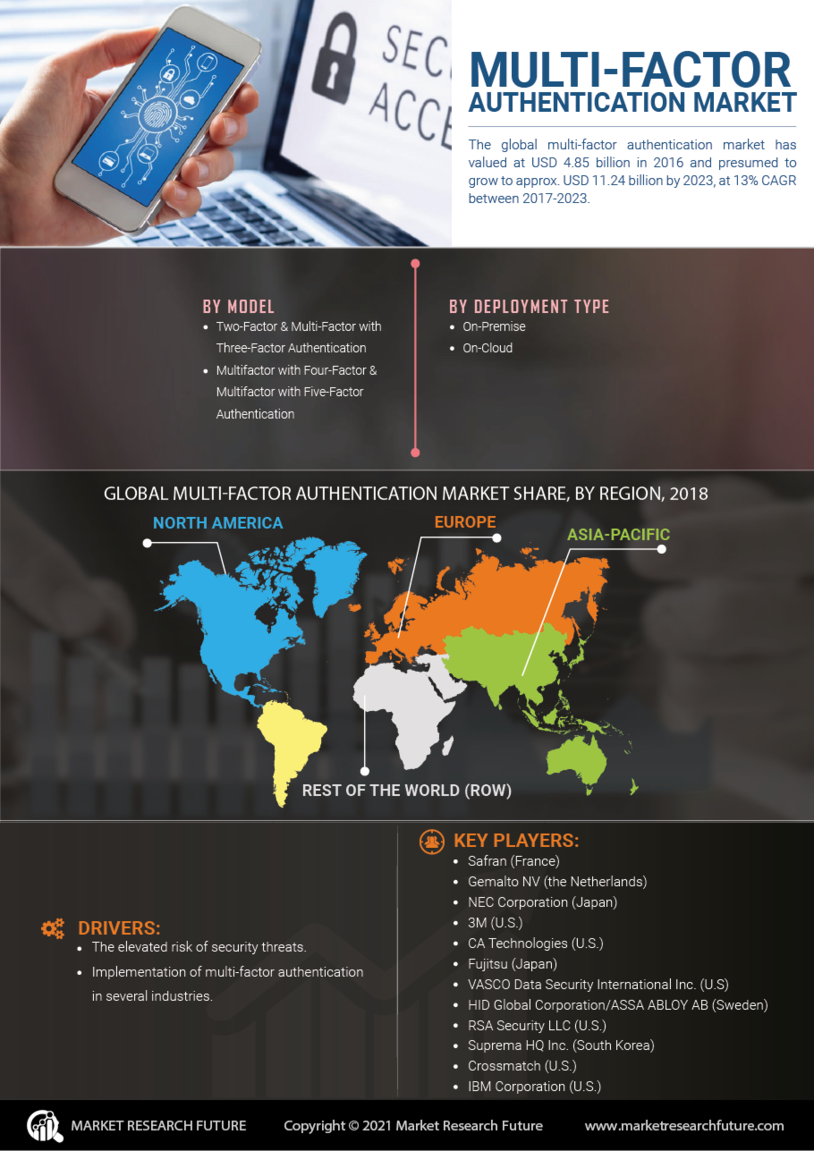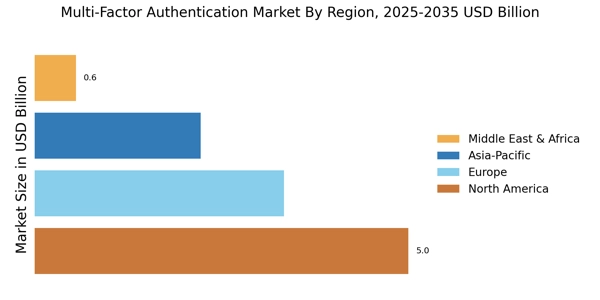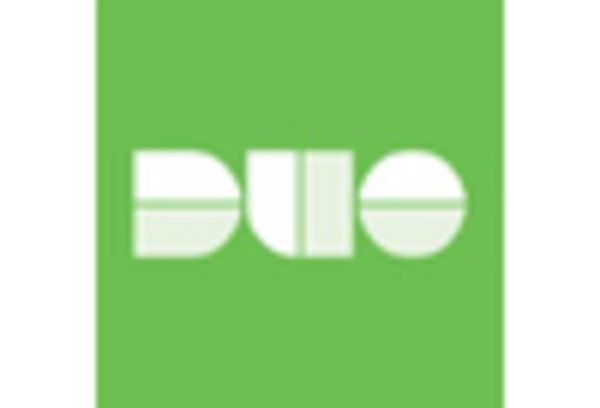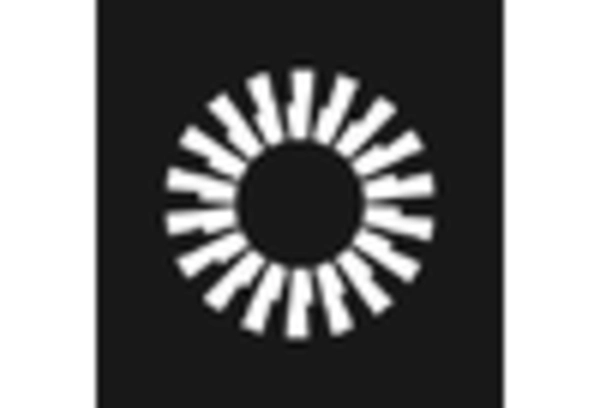Increasing Cyber Threats
The rise in cyber threats has become a pivotal driver for the Multi-Factor Authentication Market. Organizations are increasingly recognizing the necessity of robust security measures to protect sensitive data from unauthorized access. In recent years, the frequency of data breaches has surged, prompting businesses to adopt multi-factor authentication as a critical component of their cybersecurity strategy. According to industry reports, the number of reported data breaches has escalated, with millions of records compromised annually. This alarming trend underscores the urgency for organizations to implement multi-factor authentication solutions, which can significantly reduce the risk of unauthorized access. As cyber threats evolve, the Multi-Factor Authentication Market is likely to experience sustained growth, driven by the imperative to safeguard digital assets.
Adoption of Remote Work Practices
The shift towards remote work practices has emerged as a crucial driver for the Multi-Factor Authentication Market. As organizations increasingly adopt flexible work arrangements, the need for secure access to corporate resources has become paramount. Multi-factor authentication provides an additional layer of security, ensuring that only authorized personnel can access sensitive information from remote locations. This trend has been accelerated by the growing reliance on cloud-based services, which necessitate robust authentication measures to protect against unauthorized access. The Multi-Factor Authentication Market is poised for growth as businesses recognize the importance of securing remote access, with many organizations implementing multi-factor authentication solutions to safeguard their digital environments.
Regulatory Compliance Requirements
Regulatory compliance is a significant driver for the Multi-Factor Authentication Market, as organizations face increasing pressure to adhere to stringent security standards. Various regulations, such as the General Data Protection Regulation (GDPR) and the Health Insurance Portability and Accountability Act (HIPAA), mandate the implementation of robust security measures to protect sensitive information. Non-compliance can result in severe penalties, prompting organizations to invest in multi-factor authentication solutions to meet these requirements. The demand for compliance-driven security measures is expected to propel the growth of the Multi-Factor Authentication Market, as businesses seek to avoid legal repercussions and enhance their security posture. As regulatory frameworks continue to evolve, the emphasis on multi-factor authentication will likely intensify, further driving market expansion.
Growing Demand for User-Friendly Security Solutions
The growing demand for user-friendly security solutions is a notable driver for the Multi-Factor Authentication Market. Organizations are increasingly aware that security measures must not only be effective but also convenient for users. Multi-factor authentication solutions that offer seamless integration and minimal disruption to user workflows are gaining traction. This trend is particularly relevant in environments where user experience is paramount, such as in financial services and e-commerce. As businesses strive to balance security with usability, the Multi-Factor Authentication Market is likely to see a rise in solutions that prioritize user-friendly features. This focus on enhancing the user experience could lead to broader adoption of multi-factor authentication across various sectors.
Technological Advancements in Authentication Solutions
Technological advancements in authentication solutions are driving innovation within the Multi-Factor Authentication Market. The integration of biometrics, artificial intelligence, and machine learning into authentication processes enhances security and user experience. These technologies enable organizations to implement more sophisticated multi-factor authentication methods, such as facial recognition and behavioral analytics, which can adapt to emerging threats. As businesses seek to leverage these advancements, the demand for cutting-edge multi-factor authentication solutions is expected to rise. The Multi-Factor Authentication Market is likely to benefit from this trend, as organizations prioritize the adoption of advanced technologies to bolster their security frameworks and protect against evolving cyber threats.



















Leave a Comment